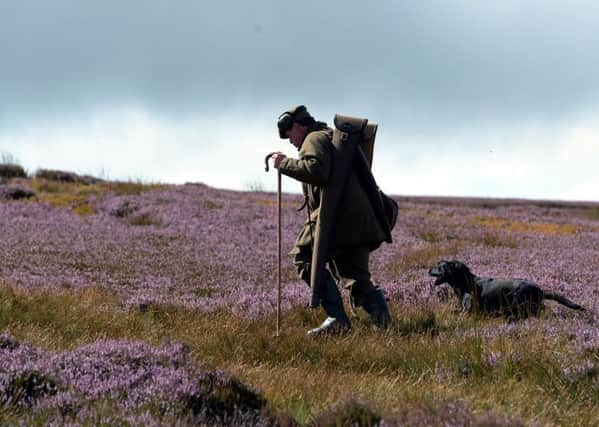Adrian Blackmore: Time to dispel false claims over grouse shooting and floods


Yet, despite this, there have been a number of spurious claims in the media recently that:
Grouse shooting has contributed to the flooding that has devastated parts of Northern England
Advertisement
Hide AdAdvertisement
Hide AdLand owners are being paid by the Government to drain their moors, which in turn enables them to produce more grouse
The management undertaken is for the benefit of the red grouse, and red grouse alone
As a sport, it is a conservation disaster.
Serious allegations that are untrue, but sadly the spreading of such damaging misinformation is becoming increasingly prevalent amongst a vocal minority who either do not have the necessary knowledge, or for reasons of their own choose not to acknowledge it.
The drainage of heather moorland with open drains, or grips, was once widespread in the uplands and in the 1960s and 70s successive governments offered upland farmers and landowners grants for draining their land; grants that were aimed at increasing agricultural productivity, not numbers of red grouse. However, research undertaken in the 1980s and ’90s found that drains continued to erode over time and that the only way to reduce sediment run-off was to block them. Doing so could also help restore natural drainage patterns, encourage the re-vegetation of bare peat, and minimise the knock-on effect of hydrological change downstream.
Advertisement
Hide AdAdvertisement
Hide AdGrouse moor managers have therefore been actively working with Defra and Natural England on a number of projects which include re-vegetation of bare peat, and drain blocking to raise water tables and encourage the growth of sphagnum moss which slows the flow of surface water and filters out any discoloration.
It is possible that this drain blocking may also be reducing flood risk downstream, and it is worth keeping in mind that the prominent ecologist Professor Jeremy Purseglove has said any link between grouse moor management and flooding is “unproven”.
In the North Pennines alone, more than 2,700 miles of moorland drainage ditches have now been blocked, and some 300 acres of bare peat have been re-vegetated. More is still to take place, and it is thanks to this work that the North Pennines Area of Outstanding Natural Beauty’s Peatland Programme has recently been presented with a Climate Change Award.
The figures across the whole of the 400,000 acres of deep peat that are managed for grouse shooting will be much higher, the exact figure is currently being collated by Natural England, but one thing is certain: it will be a figure that is considerably greater than that for the remaining four fifths of the uplands of England, where no such management takes place.
Advertisement
Hide AdAdvertisement
Hide AdIt is thanks to this management that more than 60 per cent of England’s upland Sites of Special Scientific Interest are managed grouse moors, and over 40 per cent are also designated Special Protection Areas for rare birds, and Special Areas of Conservation for rare vegetation.
It is therefore difficult to understand how others could claim this management to be a conservation disaster. Studies have shown that threatened species of waders are up to five times more abundant on moors managed for red grouse and that, thanks to the predator control that is carried out by gamekeepers, birds such as the curlew and lapwing, both of which are species of the highest conservation concern, are 3.5 times more likely to raise a chick to fledging.
Our native black grouse also benefits, with 96 per cent of that red-listed species now being found on the fringes of moorland managed for grouse shooting, thanks both to the predator control that is undertaken, and to the planting of over one million native trees in moorland gills to provide cover, and a source of food.
It is also important not to overlook the fact that heather moorland is rarer than rainforest, and is threatened globally, with 75 per cent of that which is left in the world found in Britain. That is thanks to it being managed for grouse shooting. It is a habitat that is a conservation priority, not one that we can afford to see destroyed by afforestation – one of the major causes of its loss over the years.
Advertisement
Hide AdAdvertisement
Hide AdGrouse shooting and the management that goes into it plays an essential part in maintaining and protecting our rare upland habitats. There are 175 grouse moors in England and Wales, and each year £52.5m is spent on their management, 90 per cent of which is privately invested.
Without the income from driven grouse shooting, which helps offset the considerable costs of that management, investment would cease. That is when a true conservation disaster would occur. Take the grouse moors of the Berwyn Hills in North Wales as an example. There, between 1985 when the remaining gamekeepers were laid off, and 2002, lapwing became virtually extinct, golden plover declined by 90 per cent, curlew by 79 per cent, ring ouzel by 80 per cent and black grouse by 78 per cent.
Adrian Blackmore is director of shooting at the Countryside Alliance.